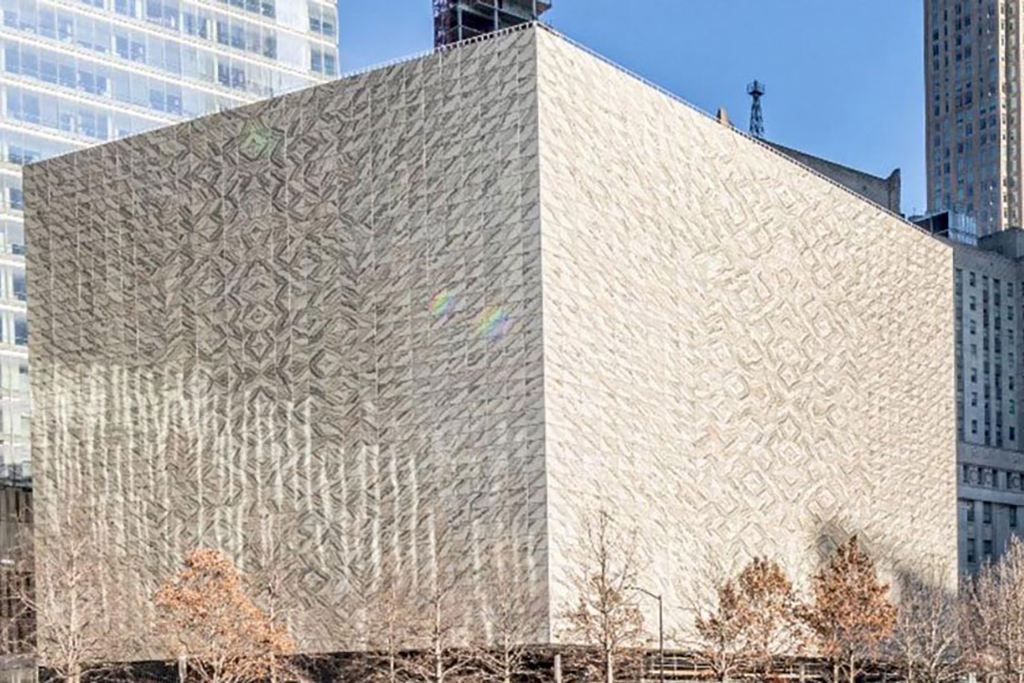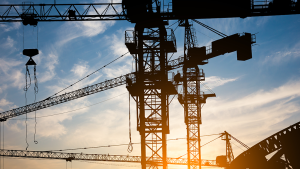NEW YORK – In a mammoth room behind translucent marble walls, workers are setting the stage for the World Trade Center’s newest addition.
It isn’t another office tower, nor is it a monument, at least explicitly, to the memory of the Sept. 11 terror attacks. It’s a theater complex.
Envisioned two decades ago to add vibrancy and draw people to a place of devastation and mourning, the Perelman Performing Arts Center is finally arriving at a very different ground zero. The site is ringed by new skyscrapers and located in a neighborhood that has more residents than before the attacks. Annually, millions of visitors come to the memorial and museum.
Still, organizers believe the arts space, also called “PAC NYC,” has an important role to play in one of the most sensitive, historic spaces in the United States.
“The memorial is here for people to come and grieve and pay their respects. The museum is for people to learn, be aware and never forget,” says Khady Kamara, PAC NYC’s executive director. “And the Performing Arts Center is here for people to celebrate life and really celebrate the resilience of New Yorkers and of the country.”
Perhaps befitting a space for theatrical drama, the $560 million institution has been through no shortage of its own. There were financial roadblocks, political buffeting and a yearslong wait for construction to begin while its designated spot accommodated a temporary transit hub. Leaders, architects, design and occupants changed.
Now the curtain is set to rise Sept. 19 with the first of five concerts focused on a theme of refuge. They follow invitation-only events, including an open house for Sept. 11 victims’ families and first responders on the 22nd anniversary of the attacks that killed nearly 3,000 people at the trade center, the Pentagon and a Pennsylvania field.
“A day doesn’t go by where I don’t think about 9/11 and the responsibility that we have to that community,” artistic director Bill Rauch said recently from the cube-like building, which stands 138 feet (42 meters) tall.
Daylight filters through the Portuguese marble walls and turns them into a radiant amber quilt patterned by chocolate and caramel veins. Sedate by day, the building’s boxy exterior is designed to glow from within at night. Its nearly 5,000 marble panels are backlit by chandeliers in a corridor surrounding theater.
Nearby but out of sight is the 9/11 Memorial, which is obscured by the 12-centimeter (half-inch)-thick stone, subtly encased in glass for protection and energy efficiency. The windowless design keeps the buzz of theatergoers at a respectful distance from people who are paying tribute at the memorial, and vice versa, architect Joshua Ramus explained.
“I didn’t want to treat the memorial like a spectacle,” he said.
The arts center was built largely with private donations, including $130 million from former Mayor Mike Bloomberg and $75 million from investor Ronald Perelman, plus $100 million from a government-financed redevelopment agency.
“There’s never been anything like it in the area, and it’s going to continue fueling the city’s comeback from the pandemic – just as the arts helped fuel our comeback after 9/11,” Bloomberg said in a statement.
With moveable walls, seats, floor sections and even balconies, the space can transform from a 1,000-seat venue into three smaller spaces. Those, in turn, can be arranged into a total of 62 different stage-and-audience configurations, with some as intimate as 100-seat rooms.
Special walnut paneling deals with the acoustical challenges of variable audience sizes and stage locations. Foot-thick rubber pads beneath the theaters absorb the sound and vibrations of a hive of subway and commuter train lines.
The opening season includes works as reflective as an opera about a case of racist hazing among U.S. soldiers in the post-9/11 war in Afghanistan, and as exuberant as “Cats” reimagined in drag ballroom culture.
“The Matrix” actor Laurence Fishburne is premiering a one-man show. Authors and presidential daughters Jenna Bush Hager and Barbara Pierce Bush are talking about parenting. Native American comics are coming together for a night of stand-up.
“We didn’t want to avoid the subject of trauma, but we also didn’t want to soak in it,” Rauch said. He and Kamara emphasize that the institution aims to feel accessible and draw a wide range of people, with ticket prices starting at $40 and free performances planned in the lobby, which will be open to the public daily.
Yet the center has confronted questions about its impact on the community and cultural scene.
When activists pressed this year to increase affordable housing in a planned skyscraper elsewhere at the trade center, their campaign argued that too much redevelopment money has gone to lavish, nonresidential buildings while many New Yorkers have been priced out of the area. Its median household income and median rent are about double the citywide average.
“The performing arts center is kind of an amenity for a luxury neighborhood that they built,” said Todd Fine, who runs a advocacy business for historical preservation in lower Manhattan. He said the facility needs “to prove that the public is going to benefit.”
Many lower Manhattan arts groups struggled after 9/11, and an early conceptual blueprint for redevelopment called for “strengthening existing cultural institutions” while developing new ones. Early on, the arts center was to house three established groups – two theaters and a visual arts museum _ plus a new museum celebrating freedom. Those plans then changed, though the 9/11 Museum took shape in a separate space underground.
Rauch says the Perelman center is committed to collaborating with local arts groups. The head of the Lower Manhattan Cultural Council, an advocacy organization, believes the facility will foster an arts-district ambiance that stands to draw attention to local groups, not compete with them.
“It’s a huge statement to have such a beautiful building dedicated to theater on that sacred ground,” said council CEO Craig Peterson.
On a recent day, James Giaccone pointed out the arts center to bystanders from the edge of one of the 9/11 Memorial’s waterfall pools. That edge bears the name of his brother Joseph Giaccone, a 43-year-old finance executive, father of two and husband.
James Giaccone, a volunteer with Sept. 11-related organizations including Tuesday’s Children, initially was wary of the political controversies surrounding early plans for the arts space.
Then he came to see it as a step forward for the trade center and on a personal level, an embrace of living life fully. His and his brother’s families love going to the theater.
“So I think he would appreciate it,” Giaccone said.
©2023 THE ASSOCIATED PRESS





Recent Comments